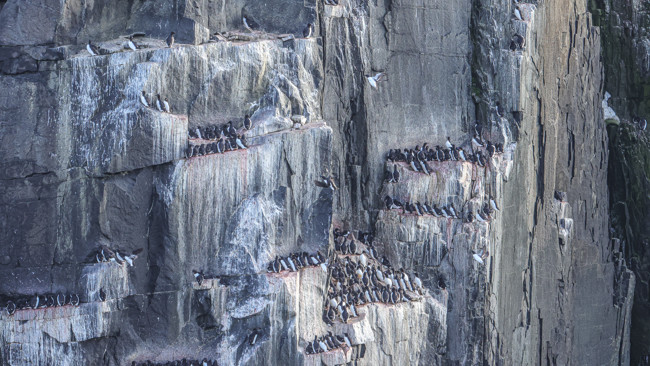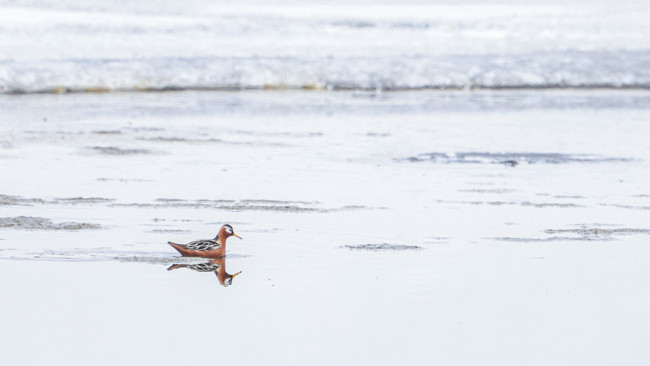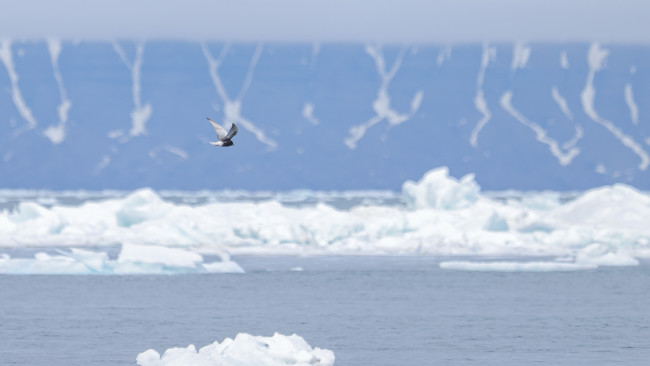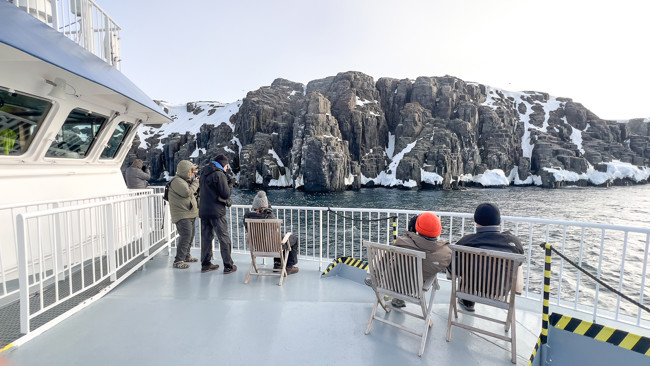There’s something extraordinary about birding on Svalbard. Just 1,300 km from the North Pole, this remote Arctic archipelago is a stark, beautiful wilderness where the birds rule in summer.
When the snow melts and the cliffs thaw, life returns in a sudden burst—thousands upon thousands of seabirds arrive to breed, filling the air with noise, movement, and drama.
Brünnich’s guillemots cram the ledges of towering sea cliffs, their deep calls echoing across the fjords. Kittiwakes nest in noisy colonies, while glaucous gulls cruise overhead, ever watchful for an easy meal. Down on the ground, Arctic terns are fiercely protecting their eggs


But there’s more than just seabirds. Delicate red phalaropes spin in tundra pools. Snow buntings sing from rocky outcrops. The elegant ivory gull is a rare prize for birders lucky enough to spot one.
And all of this happens in the glow of the midnight sun, where days never end and time seems to stretch. Svalbard’s birdlife is intense, fleeting, and magical - a reminder of the resilience of nature at the edge of the world.
Whether you’re a seasoned birder or just discovering the joy of birds, Svalbard offers an unforgettable encounter with life in one of Earth’s most extreme environments.
As of 2024, there was 241 reported bird species on Svalbard, but at Polar Quest we know there’s at least 242 - as our guests this season have already had a first sighting for Svalbard (a White-winged black tern spotted near Edgeøya).
With 45 species regularly breeding (25 of these are considered to be common), for many birders it’s a really special experience to see these birds in their summer, breeding plumage up in the high north. The dramatic and icy landscapes of Svalbard mean that keen bird photographers are also very satisfied.


Birding on Svalbard is especially rewarding for those that are persistent. Being prepared and bringing your binoculars with you everywhere you go (even to meals!) will maximise your chances of sightings. The lounge is the perfect place to sit with a cup of coffee and watch the world (and the birds) go by.
Please note: Depending on the lens used for a photo or video shot an animal may appear to be closer than it is. We always follow strict wildlife guidelines to ensure that we do not cause any disturbance.











